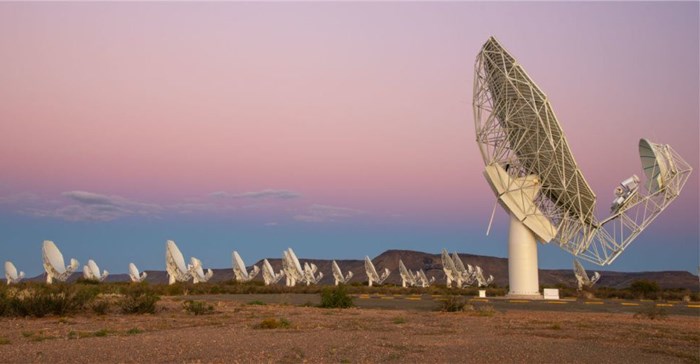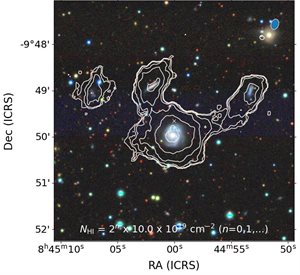Astronomers in South Africa using the powerful MeerKAT radio telescope stumbled across 49 new galaxies – all by accident. The scientists, led by Dr. Marcin Glowacki from the International Centre for Radio Astronomy Research (ICRAR), were actually looking for star-forming gas in one specific galaxy. Imagine their surprise when instead of gas, they picked up signals from a whole bunch of new galaxies.

The MeerKAT radio telescope instrument located just outside Carnarvon forms part of the Square Kilometre Array project.
"This was totally unexpected," Dr Glowacki admitted. "I never could have imagined we'd find so many new galaxies so quickly!"
Glowacki says the discovery shows just how powerful MeerKAT is when it comes to finding galaxies and the gas they contain. He's nicknamed the new discoveries the "49ers", a nod to the miners who struck gold in California way back in 1849.
Many of these galaxies are clustered together, with several found in just one observation. Three, in particular, seem to be linked by their gas.
"These three are really interesting," says Dr Glowacki. "It seems like the middle galaxy of this trio is a bit of a bully, stealing gas from its neighbours to make its own stars."
The team's work was made possible thanks to clever observing techniques and support from Professor Ed Elson at the University of the Western Cape. It was no fluke, either – an ICRAR student even managed to find more of these gas-rich galaxies using MeerKAT's data.
Dr Glowacki and his team are excited to keep exploring the cosmos and hope to share even more incredible discoveries soon.
While most big galaxy discoveries come from planned surveys, the MeerKAT telescope has shown us how many exciting finds might be hiding in plain sight.
What makes this telescope special?
The team discovered 49 gas-rich galaxies in data they weren't even analyzing for that purpose. Since previous large-scale surveys didn't reach the same level of detail as MeerKAT, it seems finding so many galaxies this way is quite rare.
The new galaxies don't just live alone. Many form clusters called "galaxy groups," and in one, a central galaxy seems to be stealing gas from its neighbors. Astronomers are excited to learn more about how galaxies interact this way.
There could be way more galaxies waiting to be found in MeerKAT's existing data. It's more sensitive than other telescopes and can look at areas of space free of radio interference. That means it picks up fainter galaxies and can help us map out the structure of the universe.
Other astronomers using MeerKAT have found similar galaxy surprises. This suggests even more discoveries are out there, waiting in data collected for different purposes.
Why does this matter? Studying these newly discovered galaxies, especially those in groups, will give scientists new insights into how galaxies grow and evolve within the larger structure of the universe.

































